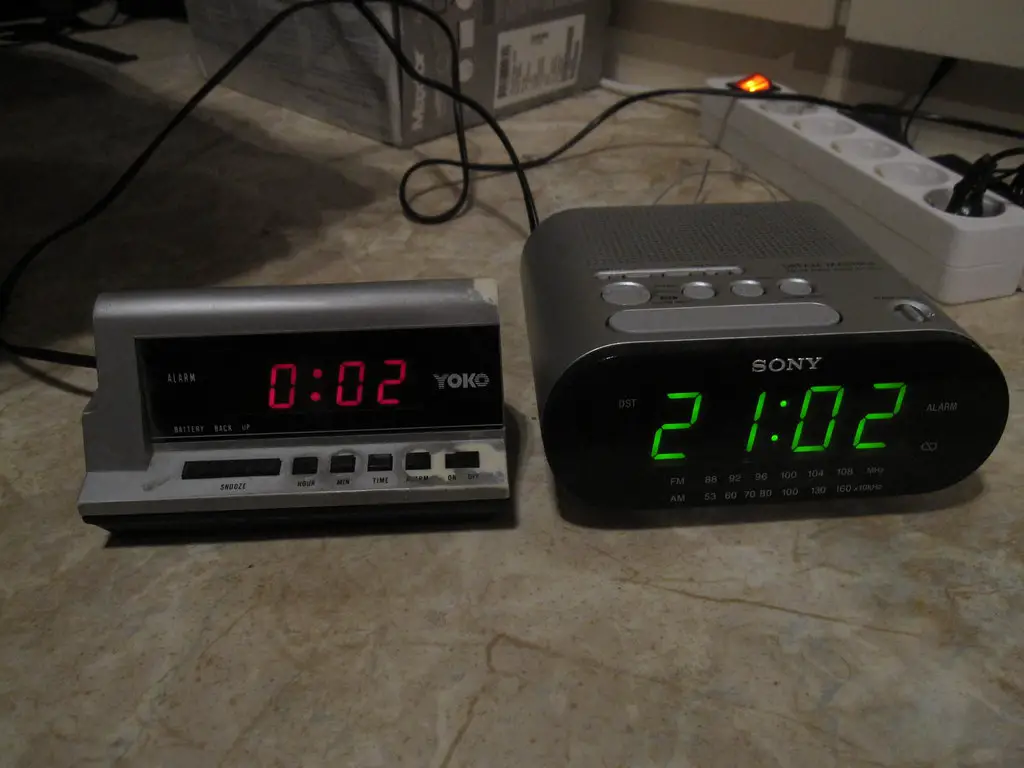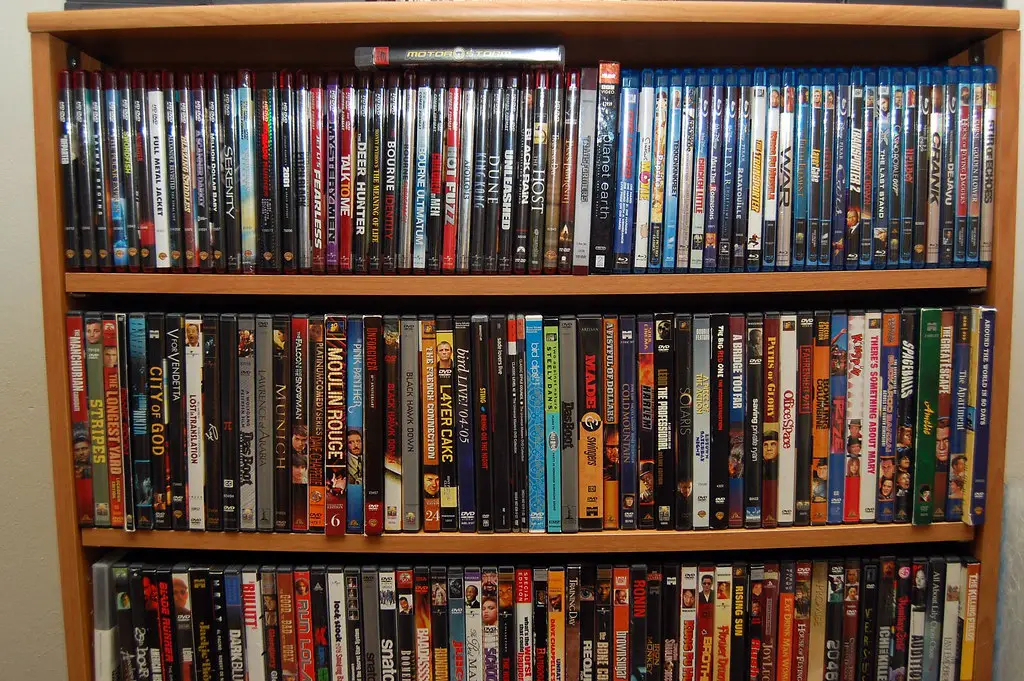Some household items don’t disappear all at once—they just slowly fade into the background until one day, you realize you haven’t used them in years. Whether it’s due to smarter tech, changing habits, or shifting styles, the things we used to rely on now sit untouched in closets and drawers. From fax machines to DVD players, certain once-essential items have quietly become relics of another time. Here are 13 household staples that have slipped into obsolescence over the last decade.
1. Landline Phones

Landlines have been on life support for years, but the last decade all but sealed their fate. According to the CDC’s National Center for Health Statistics, more than 75% of U.S. adults lived in wireless-only households by 2022. With mobile phones offering everything from texting to video calling, the case for keeping a landline has evaporated. Even alarm systems and emergency services now accommodate mobile networks.
Most people who still have one either forget it exists or use it for robocalls. Younger generations don’t even bother plugging them in. That chunky cordless phone you’ve had since 2005? It’s just collecting dust at this point.
2. DVD and Blu-ray Players

As noted by Forbes, the rise of streaming services like Netflix, Disney+, and Max has rendered physical media nearly irrelevant. DVD and Blu-ray players, once prized possessions in every living room, have largely disappeared from shelves—and from use. Sales of physical discs have plummeted, with streaming accounting for over 80% of home entertainment revenue in recent years. Most newer laptops don’t even come with disc drives anymore.
If you still own a DVD player, it’s likely buried in a box or plugged in but never used. That impressive movie collection now feels more like a decoration than a library. Unless you’re watching niche or old titles that haven’t been digitized, streaming has made the format obsolete. It’s convenience that won.
3. Alarm Clocks

The bedside alarm clock used to be a must-have, but smartphones have taken over their job completely. According to The Washington Post, more than 90% of Americans now use their phones as their primary alarm. That means fewer people are buying traditional clock radios or digital clocks altogether. Even newer “smart” alarm clocks are struggling to stay relevant in the age of smartwatches and voice assistants.
You may still have one sitting on your nightstand, but chances are it’s unplugged or flashing “12:00.” For most households, it’s more of a backup—or just part of the décor. The multi-functionality of phones simply made alarm clocks redundant. Another ritual quietly replaced by a single device.
4. Checkbooks

Paper checks have been in steep decline, especially with the growth of mobile banking and payment apps. As noted by CNBC, check usage in the U.S. has dropped over 80% since the year 2000, and the trend only accelerated in the last decade. Venmo, Zelle, and PayPal have made it easier to split bills and pay rent with a few taps. Even many landlords and utility companies now prefer electronic payments.
Some people still keep a checkbook “just in case,” but they rarely open it. It’s mostly used for the occasional DMV fee or birthday card. For younger adults, writing a check is as rare as using a fax machine. It’s not gone yet—but it’s certainly obsolete.
5. Fax Machines

Fax machines had a long run, especially in home offices—but digital documents have taken over. Cloud storage, e-signature services, and email PDFs have made faxing unnecessary for most people. Even companies that once relied on fax machines now accept scanned forms via email. What once felt high-tech now feels painfully slow.
If you have a home fax machine, it probably hasn’t been used since your last tax filing… five years ago. It takes up space, eats up ink, and almost no one asks for a fax number anymore. It’s a ghost from an analog past. A clunky reminder of how far we’ve come.
6. Answering Machines

Before smartphones and voicemail, answering machines were a household essential. You’d rush home hoping to hear the beep—and maybe that message you were waiting for. But now, voicemail is baked into every phone, and most people prefer to text anyway. The clunky little tape player or digital recorder no longer serves any real purpose.
If you’ve still got one attached to your old landline, it’s probably recording robocalls and spam. Most modern cordless phones include built-in voicemail systems, making separate machines unnecessary. It’s another case of technology folding multiple tools into one device. The machine’s charm didn’t survive the smartphone era.
7. Rolodexes

Once a staple of home offices, Rolodexes were the original contact management system. Business cards, handwritten notes, and tiny tabs were carefully organized into spinning plastic wheels. Now, contact info is stored on your phone, email, or cloud—searchable, synced, and backed up. No one’s reaching for a Rolodex when they can say, “Hey Siri, call Mom.”
Even if you still have one, it’s probably filled with outdated numbers and forgotten names. They’ve become decorative or nostalgic rather than functional. In the digital age, physical contact management is just too slow. It’s hard to compete with searchable speed.
8. Cable TV Boxes

Cord-cutting has become more than a trend—it’s the new normal. Streaming platforms and smart TVs have drastically reduced the need for cable boxes, especially with services like YouTube TV, Hulu Live, and Sling replacing traditional packages. Households are ditching the rental fees and long-term contracts in favor of flexible subscriptions. In fact, cable and satellite TV subscriptions have fallen by nearly 30% over the last decade.
That bulky cable box? It’s becoming irrelevant—even if it’s still plugged in. More homes rely on apps or smart remotes to navigate content. Fewer cords, fewer boxes, fewer headaches.
9. CD Players and Stereos

Physical music players have taken a major backseat to digital streaming. Spotify, Apple Music, and Amazon Music have all but eliminated the need for dedicated CD players or shelf stereos. Even in cars, CD slots are becoming rare. Portability, convenience, and playlists have transformed how we listen to music.
That said, some audiophiles still swear by physical media for sound quality. But for the average listener, the equipment has become obsolete. Stereos that once sat proudly in living rooms now live in attics. Time and tech moved on.
10. Wall Calendars

Decorative wall calendars used to hang in kitchens, offices, and hallways everywhere. Now, digital calendars are synced across phones, laptops, and smart devices. You can get reminders, schedule changes, and Zoom invites with one tap. Wall calendars, while still charming, are no longer practical.
If you do still hang one, it’s likely more for looks than scheduling. The novelty images might be nice, but functionality is limited. In a world where plans change quickly, paper calendars can’t keep up. That pen-and-paper charm doesn’t cut it anymore.
11. Standalone GPS Units

Remember when you had to suction-cup a GPS to your windshield before every road trip? Thanks to built-in navigation in smartphones and vehicles, those days are largely over. Google Maps and Waze have made real-time traffic updates and rerouting part of the norm. Dedicated GPS units like Garmin are now niche tools for outdoor adventures rather than daily driving.
If you still have one, it probably lives in your glovebox—unused for years. Their software updates lag behind apps, and they often require a computer connection to update. For modern travel, they’re just too slow and clunky. We’re living in a tap-and-go world.
12. DVD Storage Racks

If you no longer use DVDs, there’s no reason to store hundreds of them on display. DVD storage racks—once a living room staple—are being tossed or repurposed. As more people digitize their collections or switch to streaming, these shelves now hold clutter or collect dust. What used to say “home theater” now just says “leftover.”
They’re too big for modern minimalism and too specific to serve another purpose. A lot of people are giving them away or turning them into craft shelves. Even secondhand stores rarely accept them. The era of home media shrines is over.
13. Plug-in Air Fresheners

While still available in stores, traditional plug-in air fresheners are falling out of favor. Concerns about air quality, synthetic chemicals, and long-term health effects have led many households to ditch them. Alternatives like essential oil diffusers, charcoal bags, and plant-based sprays are gaining ground. People want fresher scents with fewer unknowns.
You may still see them in bathrooms or entryways, but they’re no longer the go-to. Their constant refill needs and limited scent range also don’t help. Once a household staple, they’ve quietly faded in popularity. The fresh smell no longer guarantees peace of mind.
